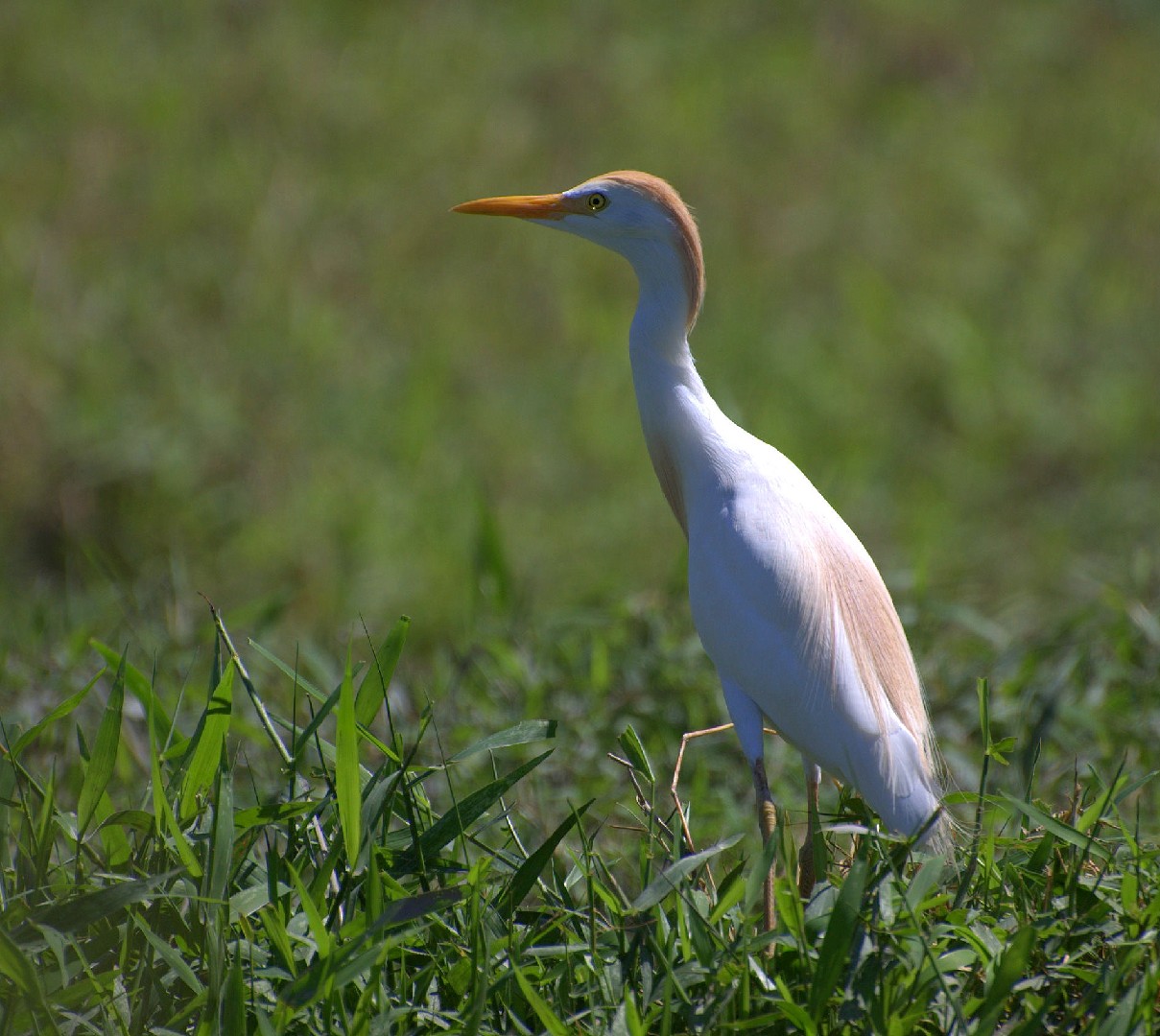Cattle Egret
A species of Bubulcus Egrets, Also known as Tick Bird Scientific name : Bubulcus ibis Genus : Bubulcus Egrets
Cattle Egret, A species of Bubulcus Egrets
Also known as:
Tick Bird
Botanical name: Bubulcus ibis
Genus: Bubulcus Egrets
 Photo By Dario Sanches , used under CC-BY-SA-2.0 /Cropped and compressed from original
Photo By Dario Sanches , used under CC-BY-SA-2.0 /Cropped and compressed from original Description
Cattle Egrets are short, thick-necked egrets. Their name refers to their preference to follow along with livestock as they forage in fields. Cattle Egrets were native only to Africa until the late 1800s when they somehow made their way throughout the Americas. They can often be found along airport runways waiting for planes to take off and blow insects out of the grass and weeds. They also follow behind farm equipment and do the same thing.
Size
46 - 56 cm
Life Expectancy
10 years
Nest Placement
Tree
Clutch Size
2 - 4 eggs
Number of Broods
22 - 28 days
Nestling Period
14 - 21 days
Feeding Habits
Cattle Egret predominantly consumes insects like grasshoppers and crickets, along with other invertebrates, fish, amphibians, small mammals, and birds. They forage alone or in groups, often near livestock which disturbs prey. Occasionally, they consume plant material such as ripe figs from banyan trees.
Habitat
Cattle Egret inhabit a variety of open terrains, including grasslands, pastures, wetlands, and even urban environments. They thrive in areas close to grazing animals and agriculture, benefiting from the abundance of insects in these regions. Their preferred climates are generally mild, and they often reside at lower elevations. Habitats range from arid fields to marshes, but they avoid regions with temperatures consistently below 40° Fahrenheit.
Nest Behavior
For cattle Egret, males select the nest site and both sexes build it, with the female taking on the majority of construction, using materials provided by the male.
Nest Characteristics
Cattle Egret nests are shallow, untidy bowls with a foundation of strong sticks and an upper layer of smaller twigs or vines, sometimes with a soft plant lining. Sized 7–24 inches across and 2–12 inches deep, located in the top outer branches of trees or shrubs in wetlands or uplands.
Dite type
Insectivorous
People often ask
Migration Overview
Some populations of cattle egrets are migratory, others are dispersive, and distinguishing between the two can be difficult for this species. In many areas populations can be both sedentary and migratory. In the northern hemisphere, migration is from cooler climes to warmer areas. Migration in western Africa is in response to rainfall, and in South America migrating birds travel south of their breeding range in the non-breeding season. 
General Info
Feeding Habits
Bird food type
Sounds
Call
Recording location: Chile
Call
Recording location: Mexico
Behavior
Cattle Egret are highly sociable throughout the year, forming dense colonies for breeding and gathering in communal roosts. Their routine involves departing from their nests or roosts just after dawn, foraging primarily during the cooler morning and later afternoon hours, with a period of rest midday. They exhibit a distinctive S-shaped neck posture during flight and exhibit a characteristic swaying walk while seeking food. Males aggressively defend display territories, with pairs also guarding nest sites. Cattle Egret typically form monogamous pairs each season, though some polygyny occurs. Their courtship involves males showcasing their plumes and performing animated dances. They face predation at all life stages from a variety of predators, displaying the precarious balance of their existence within diverse ecosystems.
Distribution Area
It was originally native to parts of Southern Spain and Portugal, tropical and subtropical Africa and humid tropical and western Asia. In the end of the 19th century it began expanding its range into southern Africa, first breeding in the Cape Province in 1908. The species first arrived in North America in 1941, bred in Florida in 1953, and spread rapidly, breeding for the first time in Canada in 1962. 
Scientific Classification
Phylum
Chordates Class
Birds Order
Pelicans and Relatives Family
Herons Genus
Bubulcus Egrets Species
Cattle Egret